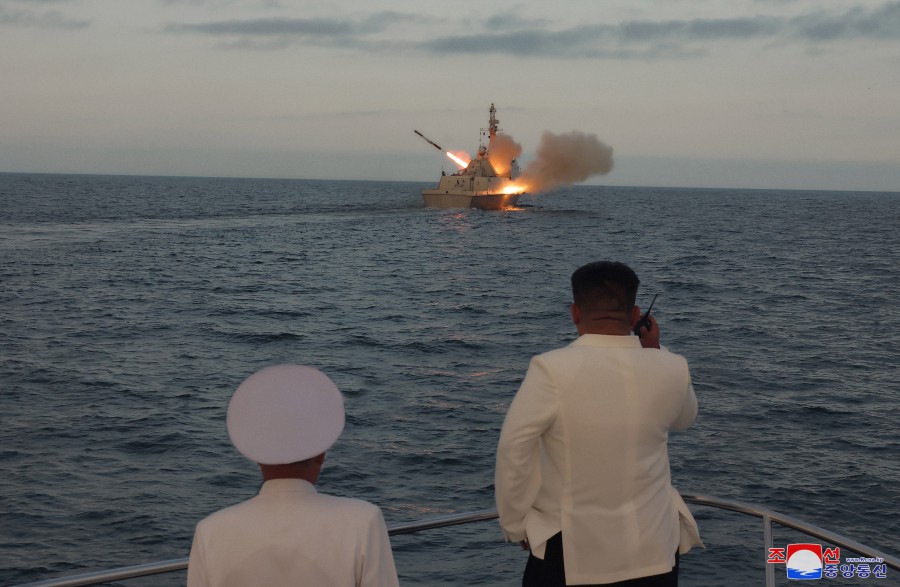by Alessandro De Pascale
A new escalation with cross-military activities on the Korean Peninsula. On 21 August, South Korea and the United States launched a joint military exercise that Seoul described as the “largest ever”. The stated aim is to strengthen their preparedness and defence against North Korea’s “evolving nuclear and missile threats”. The annual Ulchi Freedom Shield, christened 2023, will last until 31 August. Over 11 days, tens of thousands of troops from the army, navy, air force and marines of the two allied countries (plus a space unit) will conduct 30 field training exercises based on a war scenario. At 2pm on Wednesday, a siren sounded in South Korea as well, ordering all civilians to the nearest shelter as part of a nationwide drill ordered by Seoul’s Ministry of the Interior and Security to boost public preparedness in the event of an “enemy invasion”.
The previous week, South Korea’s National Intelligence Service (NIS) 007s had also warned their Government that North Korea was preparing “various provocations” for these operations, including an intercontinental ballistic missile test scheduled to coincide with the exercise. And so it did. Not least because Pyongyang condemned the Ulchi Freedom Shield as a dress rehearsal for war from the outset, repeatedly putting the US and South Korea on notice and promising “overwhelming” action in response. Also on Monday, coinciding with the start of the joint exercise by the two allied countries, the Korean Central News Agency (KCNA), North Korea’s state news agency (and only one), released photos of Kim Jong-un overseeing a strategic cruise missile test. The pictures showed the North Korean leader standing on the deck of a ship, surrounded by officers, watching from behind as a missile was launched from another naval unit.
As usual, North Korea’s KCNA agency did not give a date or any details about the type of weapon being tested. It only added that the launch was aimed at “fine-tuning the ship’s combat functions and the characteristics of its missile system”, with the aim of improving the sailors’ ability to carry out an “attack mission in a real war”. As for the missile fired, the North Korean news agency said it “hit the target quickly and without a single mistake”. On Tuesday 22 August, North Korea also warned Japan that it would launch its own military satellite into orbit in the coming days, less than three months after its first unsuccessful attempt last May (when the rocket crashed into the sea). Japanese Prime Minister Fumio Kishida’s office said he had instructed his government to work with the US, South Korea and other allied nations to urge a cancellation.
These are the visible cross-military activities. Then there is the cyberwar, which is being fought in a continuous cycle with computers. According to South Korean law enforcement officials, suspected North Korean hackers immediately targeted contractors working at the War Simulation Centre of the planned exercises from the start of the allies’ joint operations. At the time of writing, several North Korean state websites were inaccessible, including that of the KCNA itself. The National Intelligence Service (NIS) 007s from May 2022 are the first Asians to be part of NATO’s Centre of Excellence for Cooperative Cyber Defence (CCDCOE), based in Tallinn (Estonia), although South Korea is not part of the Atlantic Alliance.
North Korea is a totalitarian state ruled by Kim Jong-un, Supreme Leader of the Democratic People’s Republic of Korea since 2011. It is one of the most impenetrable nations in the world, deeply isolated both politically and economically. It occupies about 55% of the Korean Peninsula, with its border with South Korea marked by a Demilitarised Zone (DMZ) that runs along the 38th parallel, the result of the division between the two countries imposed by the US and the Soviet Union at the end of the Second World War and crystallised after the Korean War (1950-1953). On 9 October 2006, North Korea carried out its first nuclear test at the Punggye-ri site (North Hamgyong Province), which was confirmed by the US on the basis of the analysis of radioactive debris in air samples taken a few days earlier. The UN Security Council condemned North Korea’s accession to the nuclear club and adopted Resolution 1718 on 14 October, imposing new economic sanctions, in particular an embargo on arms and related materiel, nuclear or missile technology and luxury goods, and an immediate freeze on funds, financial assets and economic resources held abroad. Apart from State propaganda, very little information is coming out of Pyongyang. On 4 August, the independent think tank Italian Institute for International Policy Studies (ISPI) published the dossier North Korea at a Critical Juncture. Domestic Emergencies and Geopolitical Opportunism.
Read more in our Korean Peninsula conflict fact sheet
On the cover photo, Kim Jong-un watching a missile test aboard a Korean People’s Army naval unit (North Korean KCNA photo)
























